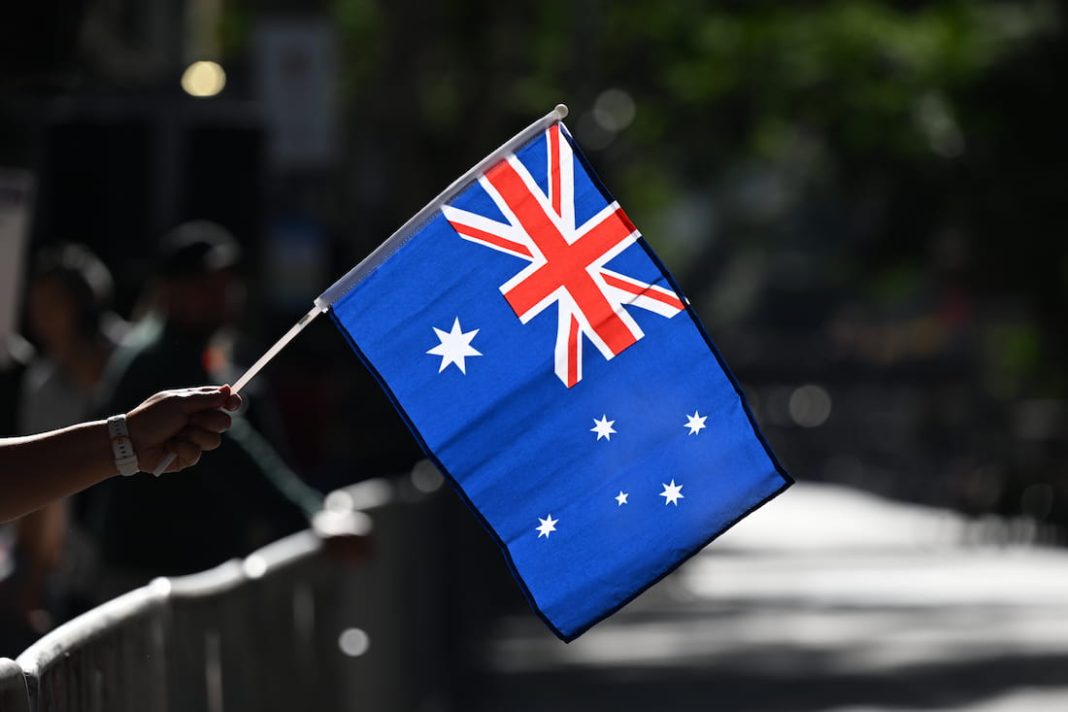WHAT WAS CLAIMED: The Anzacs did not fight under the blue Australian flag, they fought under the Red Ensign.
OUR VERDICT: False. The blue Australian flag, the Red Ensign and the Union Jack were all used by the Anzacs.
An old claim that the Anzacs fought only under the Red Ensign – a red version of Australia’s national flag – has been resurrected online.
This is false. The Anzacs used the Australian national flag (the Blue Ensign) as well as the Red Ensign and the Union Jack.
Various associated claims are being made in reference to the flags.
Many posts claim the Red Ensign is Australia’s “true flag” because it’s the one the Anzacs fought under. While many posts claim the blue flag represents “corporate Australia”.
The corporate Australia canard is a myth based in sovereign citizen (SovCit) movement conspiracies that AAP FactCheck has previously debunked.
“This is not the flag our Anzac’s [sic] fought under,” one post reads. “They fought under the red flag. The blue one represents the corporation-government.”
Another describes the Red Ensign as Australia’s “true flag” – “the one our Anzacs fought under for your freedom”.
“Use the red instead,” this post reads. “You’re flying the foreign corporation’s flag,” the post continues in reference to the Blue Ensign.
Associate Professor Bruce Baer Arnold of Canberra Law School is an expert in Australia’s SovCit movement and says the claims are “nonsense … a modern myth that keeps getting elaborated by ‘true believers'”.
“There’s no evidence that service people in 1914-1918 thought in terms of an Australian flag being illegitimate,” he told AAP FactCheck. “Australians were recruited, served under and were welcomed back using the [blue] Australian flag.”
The Red Ensign dates back to 1901. In the lead-up to Federation, a flag-design competition was announced by the new federal government.
Entrants were asked to send two designs – one for official and naval purposes, the other for merchant ships. After more than 30,000 submissions, the Blue Ensign and the Red Ensign, respectively, were chosen.
In 1908, the Blue Ensign replaced the Union Jack at military forts, and in 1911 it became the saluting flag at all reviews and ceremonial parades.
According to the Department of Prime Minister and Cabinet, in the first half of the 20th century there was considerable confusion over the flags’ appropriate usage.
This was clarified with the passing of the Flags Act 1953, which named the Blue Ensign as the national flag (before then, Australia’s official flag remained the Union Jack).
The Australian National Flag Association says the confusion caused the Red Ensign to be widely used in unofficial capacities, well beyond its use in the merchant navy.
This included many soldiers using the Red Ensign in both world wars.
But Australian War Memorial historian Michael Kelly says there’s no truth to the claim Anzacs only fought under the Red Ensign.
Mr Kelly pointed to the Blue Ensign being raised at Kawieng [now Papua New Guinea] by Australian forces in late 1914.
He also said the Australian War Memorial holds a wool bunting Blue Ensign which was carried by an Australian serviceman throughout France and Belgium between 1915 and 1918.
The war memorial website states that this flag “was often called into service for various ceremonies in France”. The soldier’s mother “subsequently embroidered the names and dates on the flag”.
Mr Kelly also said the Australian Flying Corps, the forerunner to the RAAF, flew the Blue Ensign during the First World War.
The war memorial holds over 1,000 postcards from World War I, many of which feature the Blue Ensign.
A photo taken in France in 1917 of an infantry division of the Australian army shows the Blue Ensign held up by cavalry.
The Verdict
The claim that the Anzacs didn’t fight under Australia’s blue national flag, they fought under the Red Ensign is false.
The Anzacs fought under the Union Jack, the Red Ensign and the Blue Ensign (now Australia’s national flag).
Confusion over which flag was Australia’s official one was settled with the 1953 Flags Act. The national flag does not represent “corporate Australia”, which is a SovCit movement myth.
False – The claim is inaccurate.
AAP FactCheck is an accredited member of the International Fact-Checking Network. To keep up with our latest fact checks, follow us on Facebook, Twitter and Instagram.



